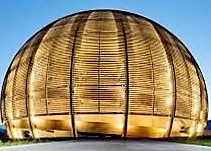Speaker
Description
While most of the heavy elements in our universe are produced via neutron-capture processes, the nucleosynthesis of the neutron-deficient p nuclei is still an open question in nuclear astrophysics. The p nuclei are most likely produced in explosive stellar scenarios by the astrophysical $\gamma$ process, which is a complex network of thousands of nuclear - mostly photodisintegration - reactions on stable and unstable nuclei. Many of the involved reactions include exotic or unstable nuclei and hence, cannot be accessed in the laboratory. Therefore, theoretical predictions obtained within the framework of the Hauser-Feshbach model are required. Enlarging the available experimental database of measured reactions at astrophysically relevant energies as well as systematic studies of the underlying nuclear physics properties that govern the output of the Hauser-Feshbach calculations is therefore of utmost importance. In this contribution, the systematic campaign of measuring several (p,$\gamma$) reactions at the University of Cologne in the last years and the experimental results will be presented. A global overview of the total available database of (p,$\gamma$)-reaction data and a systematic comparison to Hauser-Feshbach calculations using state-of-the art nuclear models reveals that excellent agreement can be achieved over the whole nuclear chart and (p,$\gamma$)-reaction rate data can be provided with high precision.
